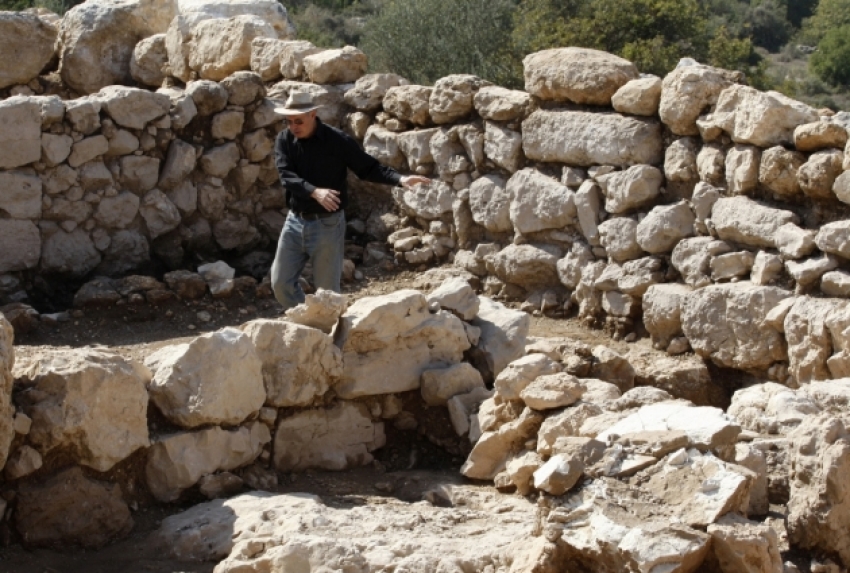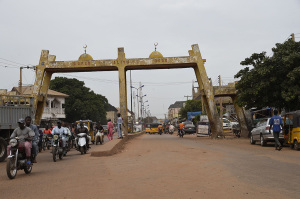Archeologists uncover arrowhead from biblical battle in Gath, Goliath's hometown

An arrowhead made from bone has been unearthed near the ancient Israeli city of Gath, the biblical home of Goliath — a discovery archeologists say could confirm biblical accounts surrounding the fall of the Philistine city.
Researchers discovered an arrow point made of animal bone inside the rubble of a home in the lower city, which they believe might have been used as part of Gath’s last stand against the army of the Aramean King Hazael 3,000 years ago, according to the study.
The findings, published in Near Eastern Archaeology, note the arrowhead was initially discovered in 2019 and was likely created in a workshop about 1,000 feet from where the arrowhead was discovered.
“These bones were specifically selected for the job given their large size from which multiple points could be made, and their thick layer of hard compact bone that was cut following the length of the bone, that is, its longitudinal axis," researchers wrote in the study. “This would make the artifacts extremely robust and capable of withstanding impact.”
Researchers believe the arrowhead was likely used in battle, as the point is broken and there is a “clear impact fracture" on the tip of the arrowhead.
“All parts of the Tell eṣ-Ṣafi/Gath point are present,” they said. “However, micro-wear analysis of the object duplicates the damage pattern found by Knecht with a clear impact fracture (i.e., a scar) on the tip of the Tell eṣ-Ṣafi/Gath arrowhead.”
“There are also micro-striations within the scar that were created as a result of the force when it made contact with its target. Moreover, the point had been broken close to the mid-shaft, perhaps as a result of this impact. These results demonstrate that the arrowhead had been used and had hit a target.”
Gath, commonly associated with the giant Goliath, who David defeated before he became King David, is the most-mentioned Philistine city in the Bible. In 1 Chronicles 18, David captures the city. In 2 Chronicles 11, his grandson Rehoboam fortifies it. The city was later captured by King Hazael of Damascus around 830 B.C. before he went on to attack Jerusalem.
The Old Testament account found in 2 Kings 12:17-18 reads: "About this time King Hazael of Aram went up and attacked Gath and captured. Then he turned to attack Jerusalem.
"But Joash, King of Judah, took all the sacres objects dedicated by his predecessors — Jehoshaphat, Jehoram and Ahaziah, the kings of Judah — and the gifts he himself has dedicated and all the gold found in the treasuries of the temple of the LORD and of the royal palace, and he sent them to Hazael king of Aram, who then withdrew from Jerusalem."
Archaeological excavations at Gath in modern-day Israel have revealed the city was destroyed in the ninth century BC, around the same time Hazael likely invaded.
Aren Maeir, a professor of archaeology at Bar-Ilan University who leads the expedition at Tell es-Safi, told Haaretz that such weaponry was uncommon in the Iron Age, as bone is far less effective than metal.
“In many cultures, you have bone projectile points, but as you move into a metal-oriented society, they disappear,” he said.
“The common arrowhead in the Iron Age was made of bronze and iron. Here and there, you still find bone points, but they are not very common … It shows the dramatic moments of the end of the city and the desperate measures they were taking to make weapons that could help in its defense,” he added.
In 2015, archaeologists uncovered the remains of a large gate and wall that shed new light on the city of Gath, its practices and its defenses.



























